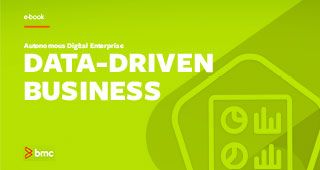With the rise of remote work and retail, businesses have pivoted online in droves this year. Add to that an increased reliance on cloud and hybrid environments, and you have a lot of data out in the world. To truly capitalize on all that data means finding smarter, better ways to acquire, disseminate, and monetize it from traditional sources like enterprise resource planning (ERP), customer relationship management (CRM), financial systems, and other systems of record as well as new sources like Internet of Things (IoT) devices, social media, and customer engagement systems.
Artificial intelligence and machine learning are the keys to maximizing data and becoming a Data-Driven Business, one of the tenets of the Autonomous Digital Enterprise (ADE), a framework that focuses on the future state of business as companies adopt emerging technologies and automation to survive and thrive in the face of persistent disruption.
How do you become a Data-Driven Business? In our e-book, we explore four business use cases that bring the ADE tenet to life.
- Big Data/ETL/Database Automation: Gain visibility and control of the entire data pipeline, ensure reliable application workflow orchestration, and seamlessly integrate with enterprise applications, databases, and cloud services by using workload automation across all data streams. This can also help reduce risks, costs, manual processes, and rework, while increasing scalability and staff efficiency and improving on-time service delivery and service level agreement (SLA) adherence.
- Predictive Analytics: Get ahead of problems before they impact your business with intelligent, automated, predictive processes that ingest, store, collect, and analyze data from traditional sources and newer sources like IoT-based devices and sensors.
- Database Performance, Management, and Recovery: Optimize performance, increase savings, simplify database administration, and minimize risk with database solutions that keep mainframe-based applications running 24×7 without neglecting maintenance schedules, help businesses meet SLAs, and provide a competitive edge through best-in-class service.
- Mainframe Cost Optimization and Capacity Management: Ensure optimal performance and availability for existing services while maintaining agility and scalability to keep pace with innovation and shifting market dynamics by using the mainframe to provide analytics, insights, and control over cost drivers and predict future trends.
By implementing a systematic, automated approach to data and analytics as part of an evolution to an Autonomous Digital Enterprise, businesses can make better decisions and leverage information assets to create value.







